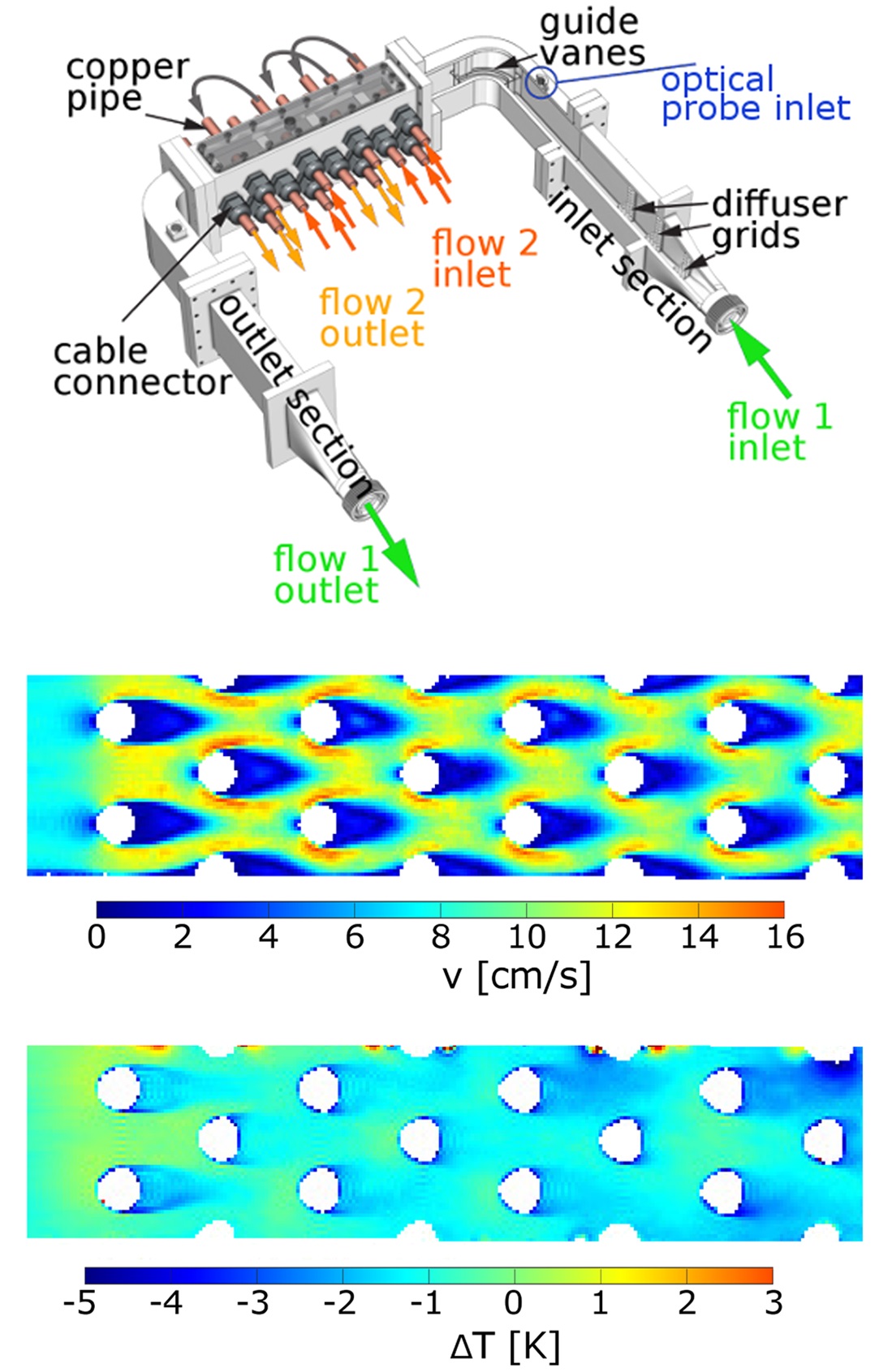BMWi LuFo V-3
Experimental method for the investigation of three-dimensional temperature and velocity fields in cooling systems based on magnetic resonance imaging
Magnetic Resonance Imaging (MRI) is a diagnostic method known from medical examinations. Among other things, this method enables two-and three-dimensional measurements of velocity and temperature fields, which is of great interest for engineering issues. This research project will investigate how this measurement technique can be used for the design of cooling systems.
Motivation
The design process of cooling systems relies heavily on numerical and empirical methods. In the current state, experimental methods for the determination of the convective heat transport are used only in the late design process, since common methods are associated with high costs in terms of time and money. In contrast, the extremely fast MRI measurement process produces data sets with millions of velocity and temperature measurement points in just a few hours. Furthermore, because no optical access is required, models can be made quickly and inexpensively using rapid prototyping or additive manufacturing methods. MRI measurements could thus be integrated in the early stage of the development process, which can significantly improve the prediction accuracy of the designs. For the examinations, the Institute of Fluid Mechanics owns a MRI laboratory, which is specially designed for flow measurements in the context of engineering.
Objectives
The fundamental feasibility of quantitatively measuring three-dimensional temperature fields in flows using MRI measurement techniques has already been demonstrated in preliminary studies. In this project, the measurement process will now be optimized and error influences will be minimized in order to advance the further development of measurement technology right up to industrial maturity. In particular, it is investigated how this methodology can be applied to the design of turbine blade cooling systems for aircraft engines.
Schedule
First of all, the measurement technique will be developed and thoroughly validated based on simple test cases to optimize the process and minimize the sources of error. Subsequently, the measuring technique will be validated in fluid flows. In this context, the influence of the fluid velocity on the temperature measurement is one of the biggest difficulties. In the final step, the applicability to realistic cooling flows is examined. For this purpose, the method is used in water-flow models with temperature gradients, which are designed to reproduce the flow state in cooling systems of current aircraft engine concepts under the most accurate possible compliance with the similarity parameters.
Further Information
| Further Information | S. Grundmann, M. Bruschewski |
|---|---|
| Duration | 1/2018 – 12/2020 |
| Financial Support | Bundesministerium für Wirtschaft und Entwicklung (BMWi) |

